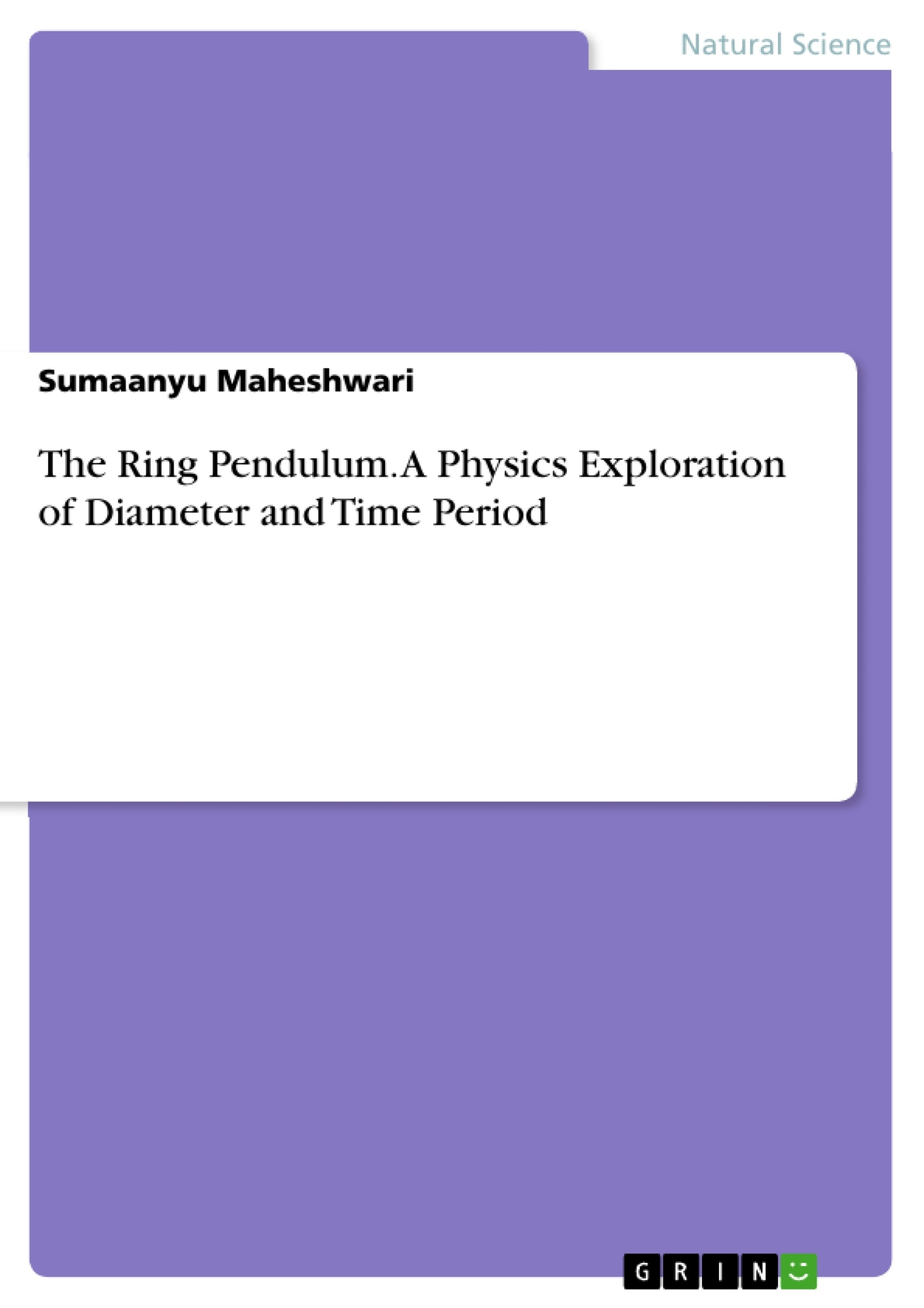Research and results on the interdependence between time taken for one oscillation of amusement park rides (like the 'Pirate ship') and their diameter, by studying the ring pendulum.
In the course of my day to day life, I have watched many objects and systems in oscillatory motion and have been contemplating about them almost every single day. One day, as I sat on my chair, looking at the ring in my hand oscillate, I wondered why its time period was so fast. I asked myself, “Does it depend on the size of the ring?”
Being an avid fan of amusement park rides, I was then compelled to relate it to thrilling rides like Disk’O and Pirate Ship. Even though the shape was not the same, my interest insisted me to make the observations for the same.
What I asked myself turned out to be true. I saw that the ring being smaller in size takes lesser time and the amusement park rides being greater in size took longer time.
My qualitative observations forced me to find the quantitative results. My research question thus asks “To what extent does the diameter of the ring pendulum affect the time taken to complete one oscillation at constant linear mass density?”
Table of Contents
- The Research Question
- History
- Hypothesis
- Preliminary Work
- Choosing the variables and constants:
- Choosing the material for the wire of the ring:
- Choosing the diameters for the rings:
- Choosing method to measure the time period of the oscillation:
- Controlling the way by which the ring is released:
- Procedure
- Gathered Data
- Data Processing
- Plotting the Graph
- Processing the data for log(T) and log(D)
- Data Processing
- Plotting the Graph
- Creating a formula for the exact relation
- Data Analysis
- Evaluation
Objectives and Key Themes
This research aims to investigate the relationship between the diameter of a ring pendulum and the time taken to complete one oscillation, while keeping the linear mass density constant. The study seeks to determine the extent to which the diameter affects the time period and to quantify this relationship.
- The influence of ring diameter on oscillation time period.
- The application of empirical relationships in analyzing physical phenomena.
- The use of experimental methods and data analysis to validate hypotheses.
- The significance of controlling variables and minimizing experimental error.
- The historical context and development of pendulum research.
Chapter Summaries
- The Research Question: This chapter introduces the research question motivating the study. It outlines the observation of the ring pendulum's oscillation and the curiosity surrounding its time period in relation to its diameter. The author connects this to similar observations in amusement park rides.
- History: This chapter provides a historical background of time measurement and the development of the pendulum clock. It explores the work of Galileo and Christiaan Huygens, highlighting their contributions to the understanding of pendulum behavior.
- Hypothesis: The author presents their hypothesis regarding the relationship between the ring pendulum's diameter and its time period, suggesting a potential empirical relationship.
- Preliminary Work: This chapter outlines the key steps taken before conducting the experiment. It discusses the selection of variables and constants, the choice of materials, and the considerations for ring diameter selection and time period measurement. It also emphasizes the importance of controlling the release mechanism using an electromagnet to minimize experimental error.
- Procedure: This chapter details the experimental procedure used to collect data, including the steps involved in setting up the experiment, measuring the diameters of the rings, and measuring the time period of oscillation using a digital stopwatch.
Keywords
Ring pendulum, oscillation, time period, diameter, linear mass density, empirical relationship, data analysis, experimental error, electromagnet, historical context, pendulum clock, Galileo, Christiaan Huygens.
- Arbeit zitieren
- Sumaanyu Maheshwari (Autor:in), 2016, The Ring Pendulum. A Physics Exploration of Diameter and Time Period, München, GRIN Verlag, https://www.grin.com/document/344989



